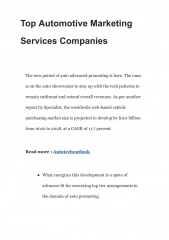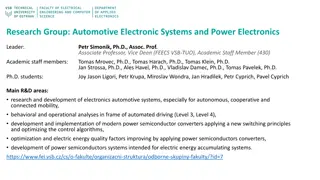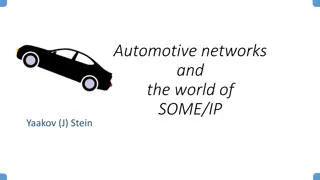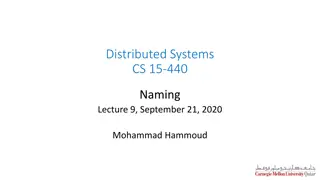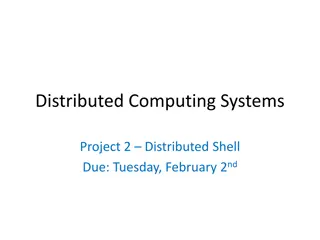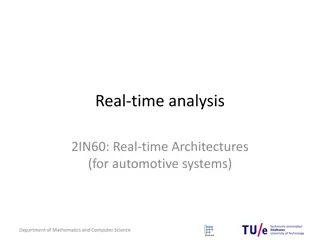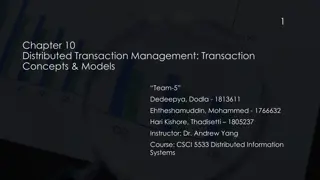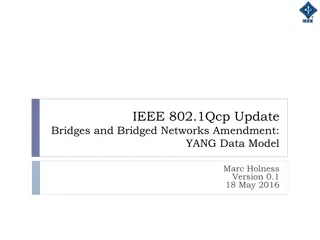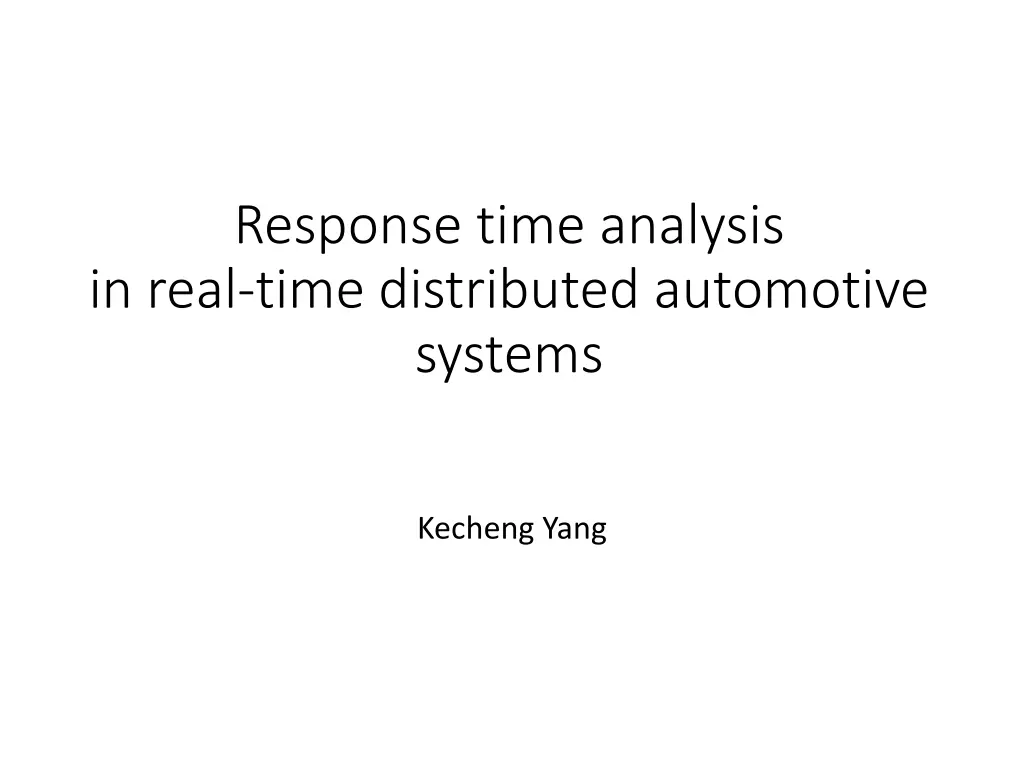
Real-Time Distributed Automotive Systems Analysis
Explore the real-time response time analysis and scheduling methodologies in distributed automotive systems. Learn about task and message activation models, period optimization, and the importance of run-time priority-based scheduling. Discover the task model representation and examples in this context.
Download Presentation

Please find below an Image/Link to download the presentation.
The content on the website is provided AS IS for your information and personal use only. It may not be sold, licensed, or shared on other websites without obtaining consent from the author. If you encounter any issues during the download, it is possible that the publisher has removed the file from their server.
You are allowed to download the files provided on this website for personal or commercial use, subject to the condition that they are used lawfully. All files are the property of their respective owners.
The content on the website is provided AS IS for your information and personal use only. It may not be sold, licensed, or shared on other websites without obtaining consent from the author.
E N D
Presentation Transcript
Response time analysis in real-time distributed automotive systems Kecheng Yang
Reference Papers Synthesis of task and message activation models in real-time distributed automotive systems. W. Zheng, M. Di Natale, C. Pinello, P. Giusto, and A. S. Vincentelli. In DATE'07. Optimizing end-to-end latencies by adaptation of the activation events in distributed automotive systems. M. Di Natale, W. Zheng, C. Pinello, P. Giusto, and A. S. Vincentelli. In RTAS'07. Period optimization for hard real-time distributed automotive systems. A. Davare, Q. Zhu, M. Di Natale, C. Pinello, S. Kanajan, and A. S. Vincentelli. In DAC'07.
Motivation Distributed architectures supporting the execution of real-time applications are common in automotive, avionic, and industrial control systems. Different design and scheduling methodologies are used.
Scheduling methodologies Avionic systems: static, time-driven schedules. Automotive systems: many of them are designed based on run-time priority-based scheduling of tasks and messages
Automotive systems scheduling run-time priority-based Why: resource efficiency and ultimately price concerns Examples: OSEK operating system standard* the CAN bus arbitration model** *OSEK. Osek os version 2.2.3 specification. available at http://www.osek-vdx.org, 2006. ** R. Bosch. Can specification, version 2.0. Stuttgart, 1991.
Task model Dataflow, represented with a Directed Acyclic Graph, denoted {V,E,R} The set of vertices V={o1,...,on} is the set of objects. Each object oican be a task or a message. The set of edges E={l1,...,lm} is the set of links. A link li=(oh,ok) connects the output port of oh(the source) to the input port of ok(the sink). R={R1,...,Rz}is the set of shared resources supporting the execution of the tasks (CPUs, ECUs) and the transmission of the messages (bus, CAN).
Task model example A functional chain or Path from oito oj,or Pi,j,is an ordered sequence P =[l1,...,ln] of links that, starting from oi=src(l1), reach oj=snk(ln) crossing a unique sequence of n+1 objects such that snk(lk)=src(lk+1). oiis the chain s source and ojits sink.
Notations oiis characterized by a maximum time requirement Ciand a resource Roithat it needs to execute or for its transmission. All objects are scheduled according to their priority iand indexes are assigned by decreasing priority levels. hp(i) denote the set of objects that have higher priorities than oi. riis the worst case response time of oi. wiis defined as the worst case time spent from the instant the job is released with maximum jitter Ji. ri= Ji+ wi
Activation models Periodic activation model: tasks are activated periodically, message transmission is triggered periodically. better schedulability, worse end-to-end latency Data driven activation model: task executions and message transmissions are triggered, respectively, by the arrival of the input data and by the availability of the signal data. better end-to-end latency, worse schedulability (due to potential bursty activations)
Periodic activation model end-to end latency
Data driven activation model end-to end latency
The problem Deadlines may miss, applying either of the activation models. E.g., deadlines of the three dataflows are 80, 120, 260
Hybrid A subset of tasks and messages is periodic, and the remaining is event-driven. Synthesis of task and message activation models in real-time distributed automotive systems. W. Zheng, M. Di Natale, C. Pinello, P. Giusto, and A. S. Vincentelli. In DATE'07. Optimizing end-to-end latencies by adaptation of the activation events in distributed automotive systems. M. Di Natale, W. Zheng, C. Pinello, P. Giusto, and A. S. Vincentelli. In RTAS'07.
RTAS'07 proposed a search algorithm
DATE'07 mixed integer linear programming (MILP) a set of linear constraints different objective functions for various purposes of optimizing. F1=minimization of the number of event buffers F2=minimization of the sum of the path latencies F3=minimization of the sum of weighted lateness for all the paths exceeding the deadline F4=minimization of the lowestpriority path latency
Result for the example system (DATE'07)
The problem (revisit) Deadlines may miss, applying either of the activation models. E.g., deadlines of the three dataflows are 80, 120, 260
Result for the example system (DATE'07)
Another optimization direction Period optimization for hard real- time distributed automotive systems. A. Davare, Q. Zhu, M. Di Natale, C. Pinello, S. Kanajan, and A. S. Vincentelli. In DAC'07. Best paper award in DAC'07
Activation model the periodic activation model end-to-end latency
Response Times Task Message
Geometric Programming (GP) If x contains both integral and real-valued decision variables, the resulting problem is a mixed-integer geometric program (MIGP).
The MIGP Integers
MIGP to GP MIGP is difficulty to solve So approximate the MIGP to a GP by introducing a set of parameters i,j the lager i,j, the more pessimistic approximation pessimistic approximation is safe, but may result in infeasibility GP instance.
Iterative procedure Let sidenote the approximated response time. Let eidenote the approximation error Iteratively compute i,jbased on ei until max{|ei|} satisfies the input threshold
A case study Just by designer s intuition The GP problem takes 24 seconds to solve on a 1.6 GHz Pentium M processor with 768 MB of RAM. The average period increases by 90%.
Effectiveness of the iterative procedure log scaled

